Exploring South Africa’s Drakensberg: 'the barrier of spears'
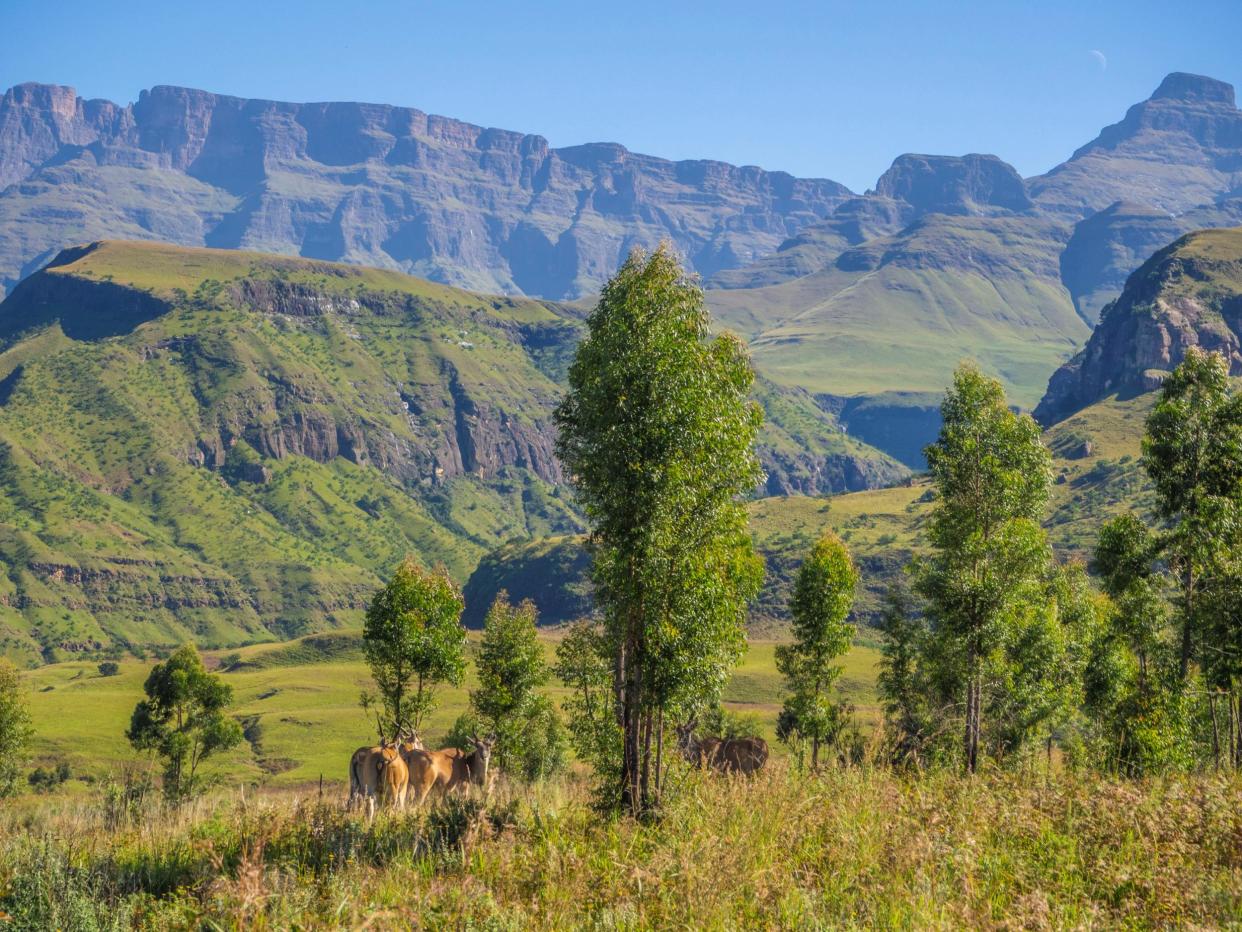
There is an unusual silence as the eight of us ride our horses along the narrow sandy paths. In part, it might be the effects of last night’s wine – but mostly, it’s that we’re all busy drinking in our surroundings. Craggy peaks tower up on all sides, dropping down to rolling hills swathed in long, yellow-green grass, gilded in the morning sunshine. We pass proteas growing by the trail edges, wild dagga with bright orange flowers and sunbirds flitting around. The only sounds are the twittering of birds and constant munching from our horses; my chestnut-brown steed, Elizabeth, lurches greedily towards a cluster of tall grass, her mouth open to grab a mouth-full as we clop past.
We’re in the central Drakensberg of South Africa’s KwaZulu-Natal province, three to four hours inland from Durban on the Indian Ocean coast. The mountainous land-locked enclave of Lesotho lies just beyond the western peaks. Running down eastern South Africa from the northernmost province of Limpopo to the Eastern Cape, the Drakensberg is a 600-mile mountain range, though when people refer to the ‘Berg they usually mean the Lesotho border section. The Zulus called this dramatic part of the range uKhahlamba: the Barrier of Spears.
Drakensberg means Dragon Mountains, a name coined by Dutch settlers (originally Drakensbergen), perhaps due to the jagged peaks that might resemble a dragon’s back. It could also have been because of the dinosaur fossils they found in the ancient rocks. These mountains are also home to the highest concentration of San rock art in southern Africa, the paintings dating back approximately 2,400 years, though it’s believed San people lived here at least 20,000 years ago.
From our base at Cathedral Peak Hotel, a historic lodge that opened in 1939, we are able to admire the surrounding mountains from an array of perspectives.
On arrival, we immediately head out on a leisurely 45-minute walk to Doreen Waterfall, one of 18 hikes from the hotel. On either side of the single-track trail, rushing streams gush down from the mountain peaks that surround us. An autumnal chill is in the air, tempered by the late afternoon sunshine. In a little gully, we find the silvery falls, tumbling down a drop of slick black rock. Leafy tree branches reach over the deep-blue pool at the bottom, which I imagine is perfect for a cooling dunk on a hot day.
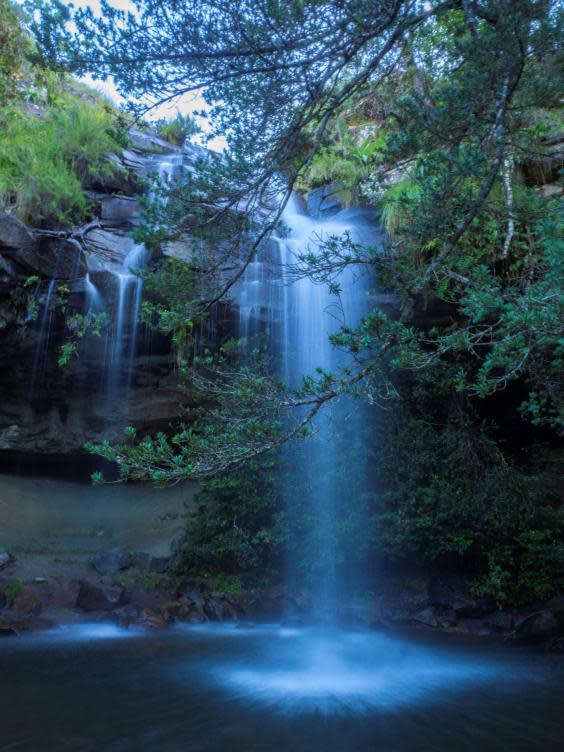
The next afternoon, we hop onto quad bikes and zip up and down the rocky trails. It’s worth slowing down to admire the staggering scenery in which we’re immersed without accidentally accelerating into a bush. We pause to watch some tan-coloured, spiral-horned eland grazing near the trail. Common eland are the largest antelope in Southern Africa and often feature in San rock art as animals of sacred importance. Recently, eland have been successfully reintroduced to the area after being hunted out. To our right is Cathedral Peak itself, a popular mountain to climb at 3,004 metres high, flanked by The Bell, another distinctive peak shaped exactly as you might expect.
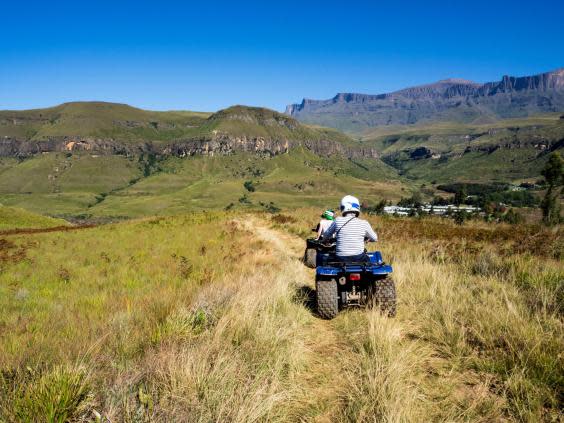
As much as we had fun on foot, horseback and quad bikes, it’s difficult to compete with a bird’s-eye view. Clambering into the hotel’s four-seat Robinson R-44 helicopter, I strap myself in and pop on the headset. The rotor blades start whirring. We lift straight up and then nose-dive into the valley. Climbing up the opposite cliff face, we skim the top and soar over a sea of basalt peaks. I watch the shadow of our chopper on the slope we’re flying along, its image dancing over deep ridges running down the rugged rock faces. Pilot Renier van Coller says he used to do Cape Town helicopter trips before he came to the Drakensberg. “This is much better,” he says, as he dips the nose of the helicopter straight over the edge of a cliff and swoops down to buzz a couple of quad bikers in the green valley below.
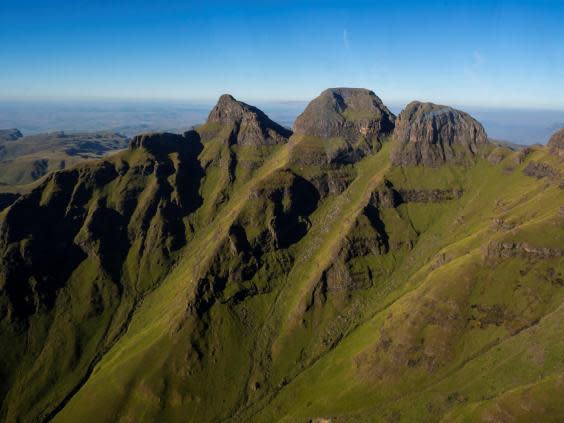
It’s late April, autumn in South Africa, but we luck out with sunny weather and a clear sky, though the temperature takes a sudden drop the moment the sun disappears. Travelling outside the peak summer season means there are far fewer people around; Cathedral Peak Hotel has 104 rooms, but it seems quiet and sleepy for the most part. It’s only at dinner – an extensive buffet of curries, roasts, salads and pasta dishes, with malva pudding and peppermint crisp tart for dessert – that everyone suddenly emerges.
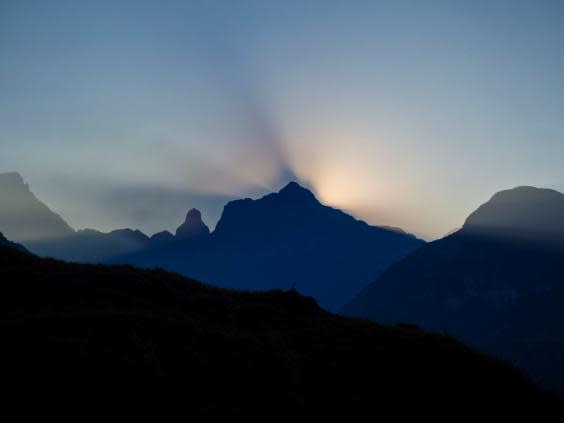
Early in the morning, I sit on my patio, which faces the mountains. The rising sun casts long shadows, heavily contouring the golden-green undulations. Sipping a coffee and basking in the dawn rays, I can’t hear any other guests – just a medley of birds twittering and calling. A pretty bushbuck wanders past; these antelope now refuse to leave the hotel having found contentment and safety in the lush grounds. Considering the landscape eye-candy, the sense of calmness and the ready supply of outdoor pursuits right on the hotel’s doorstep, I think they might be onto something.
Travel essentials
Getting there
British Airways flies direct from London to Durban from £684.
Staying there
Cathedral Peak offers rooms from ZAR 1,720 (£93) per person per night, including all meals.
Visiting there
Find budget to high-end South Africa tours, including the Drakensberg, at safaribookings.com.
For more information about the Drakensberg, visit southafrica.net.


